#chengjiang
Text
Bivalved arthropods from the Cambrian
Surusicaris elegans
a taco shrimp found in the burgess shale
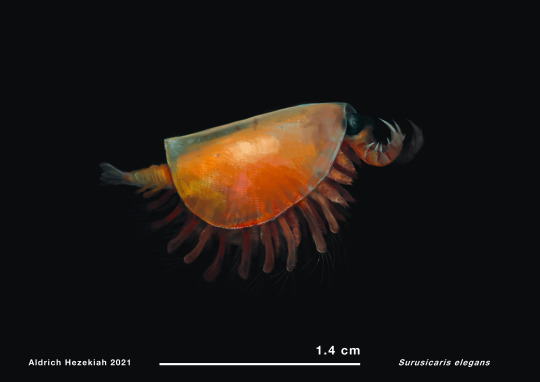
Ercaicunia multinodosa
leggy boi from the chengjiang biota
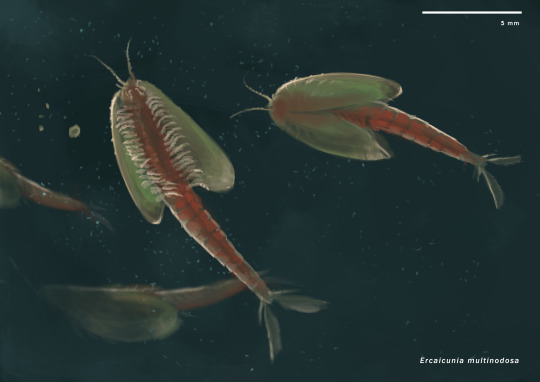
Erjiecaris minisculo
related to Ercaicunia, although it's tempting to draw it as a boomerang boi, it was most likely compressed into that shape after death

#paleo art#paleoart#paleontology#cambrian#cambrian period#burgess shale#chengjiang biota#chengjiang#fossil#bivalved arthropod#arthropod#invertebrate
164 notes
·
View notes
Text

a fossil a day keeps the sad vibes away
#dinovember#dinovember2022#i feel he has a very mischievous energy#i like the chengjiang biota but i feel like they're not hyped enough compared to the burgess#paleoart#paleontology#mine#art#procreate#illustration#illustrators on tumblr#fossil art#artists on tumblr#paleozoic pals#chengjiang#chengjiang shale#digital art#palaeoblr
32 notes
·
View notes
Text

Before we know it, we get to see how the Spikey Lad protects itself - as a different creature, one of the large shrimpy things, comes out from the gloom! It reaches out to try and grab the spikey lad... and gets a pincer full of sharp spikes instead! The shrimpy thing doesn't make a sound, simply swims away quickly, while we tumble off of the spikey lad and float through the currents
As we float around, we see many of the Orbs from before, which propel themselves through the current gently. They come in a variety of colors and shapes, and they surround all of us in a strange otherwordly swarm.

As we float around among the orbs, we are once again faced with Decisions. There are many things we haven't seen yet here in the Cambrian...
This is a continuation of these posts and is an ongoing choose your own adventure story! (1) (2) (3) (4) (5) (6) (7) (8) (9) (10) (11) (12) (13) (14)
#palaeoblr#Paleoblr Choose Your Own Adventure#Maotianshan Shales#Chengjiang Biota#Cambrian#Choose Your Own Adventure
234 notes
·
View notes
Link
GreenTree Inn Shantou Chengjiang Road Business Hotel Getting in and around Shantou is a breeze when staying at At Front desk services including express check-in or check-out, luggage storage and safety deposit boxes can assist with your needs. Getting tickets for the city's best entertainment is easy through the hotel's ticket service and tours. Packing light is possible at Forgot to pack something? All your last-minute needs can be fulfilled by the convenience stores, saving you time and hassle. Smoking is allowed only in the designated smoking areas provided by hotel. All rooms at Every day at Apart from amenities and services,
0 notes
Note
Jiang cheng jiang cheng jiang cheng jiang cheng jiang cheng jiang cheng Jiang cheng jiang cheng jiang cheng jiang cheng jiang cheng jiang cheng Jiang cheng jiang cheng jiang cheng jiang cheng jiang cheng jiang cheng Jiang cheng jiang cheng jiang cheng jiang cheng jiang cheng jiang cheng Jiang cheng jiang cheng jiang cheng jiang cheng jiang cheng jiang chengJiang cheng jiang cheng jiang cheng jiang cheng jiang cheng jiang cheng jiang che-

126 notes
·
View notes
Text
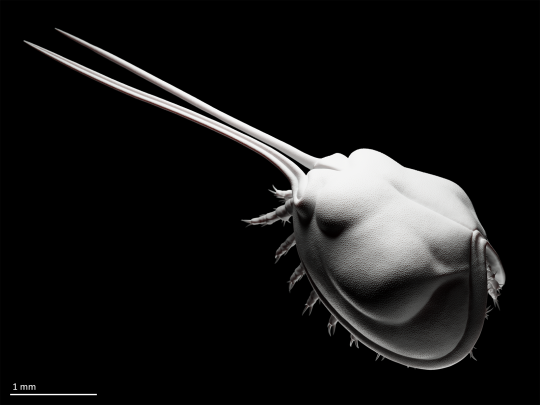
Sculpt of the small bivalved arthropod Gladioscutum lauriei from the middle Cambrian of Australia (after Hinz-Schallreuter & Jones 1994).
Gladioscutum had a body only 2-3 mm long, but, being undoubtedly aware of its disappointingly small size compared to its cooler Cambrian cousins like radiodonts and trilobites, tried to make up for it with a pair of (presumably) front-facing spines that were at least as long as the rest of the head shield.
Other than improving its self-esteem, the function of Gladioscutum's extremely elongated spines is unknown. The enlarged spines of other small Cambrian bivalved arthropods have been suggested to fulfill a sensory role, but this remains speculative (Zhang et al. 2014).
References and notes:
Gladioscutum was originally described as an "archaeocopid", an order that is now known to be an artificial grouping of various small bivalved arthropod fossils superficially resembling modern ostracod crustaceans. To my knowledge, the affinities of Gladioscutum have not been reinvestigated since its initial description, but its appearance (marginal rims, valve lobation, ornamented surface, simple hinge line) and age seem bradoriid-y enough (Hou et al. 2001) for me to more or less confidently reconstruct it as one (top scientific rigour as always on this blog).
Appendage morphology is unknown in Gladioscutum - what little soft anatomy I have not modestly hidden under the head hield is based on the bradoriid Indiana sp. from the Chengjiang Biota (Zhai et al. 2019). In that species, only the antennae are differentiated from the rest of the appendages, which has the double advantage of (1) not making crazy hypotheses about limb specialization in Gladioscutum and (2) giving me fewer different types of limbs to sculpt.
Like Gladioscutum, most bradoriids are only known from their decay-resistant valves, which are often squashed flat in a so-called "butterfly" position. This arrangement has been traditionally interpreted as the life position of the animals, which were implied to crawl over the seafloor like tiny crabs (e.g., Hou et al. 1996). Yet, undistorted fossils of head shields preserved in 3D are almost always closely drawn together, which is similar to the way modern bivalved arthropods like ostracods are articulated (protecting the soft limbs and body) and probably more reflective of the actual life position of bradoriids (Betts et al. 2016), as depicted here.
References:
Betts, M. J., Brock, G. A., & Paterson, J. R. (2016). Butterflies of the Cambrian benthos? Shield position in bradoriid arthropods. Lethaia, 49(4), 478–491. https://doi.org/10.1111/let.12160
Hinz-Schallreuter, I., & Jones, P. J. (1994). Gladioscutum lauriei n.gen. N.sp. (Archaeocopida) from the Middle Cambrian of the Georgina Basin, central Australia. Paläontologische Zeitschrift, 68(3), 361–375. https://doi.org/10.1007/BF02991349
Hou, X., Siveter, D. J., Williams, M., Walossek, D., & Bergström, J. (1997). Appendages of the arthropod Kunmingella from the early Cambrian of China: Its bearing on the systematic position of the Bradoriida and the fossil record of the Ostracoda. Philosophical Transactions of the Royal Society of London. Series B: Biological Sciences, 351(1344), 1131–1145. https://doi.org/10.1098/rstb.1996.0098
Hou, X., Siveter, D. J., Williams, M., & Xiang-hong, F. (2001). A monograph of the Bradoriid arthropods from the Lower Cambrian of SW China. Earth and Environmental Science Transactions of The Royal Society of Edinburgh, 92(3), 347–409. https://doi.org/10.1017/S0263593300000286
Zhai, D., Williams, M., Siveter, D. J., Harvey, T. H. P., Sansom, R. S., Gabbott, S. E., Siveter, D. J., Ma, X., Zhou, R., Liu, Y., & Hou, X. (2019). Variation in appendages in early Cambrian bradoriids reveals a wide range of body plans in stem-euarthropods. Communications Biology, 2(1), Article 1. https://doi.org/10.1038/s42003-019-0573-5
Zhang, H., Dong, X., & Xiao, S. (2014). New Bivalved Arthropods from the Cambrian (Series 3, Drumian Stage) of Western Hunan, South China. Acta Geologica Sinica - English Edition, 88(5), 1388–1396. https://doi.org/10.1111/1755-6724.12306
#i'll probably make more art of cambrian bivalved arthropods with fucked up spines#because there is no shortage of them#and they still manage to all look rather distinct#gladioscutum#bradoriid#(?)#arthropod#cambrian#paleozoic#australia#paleontology#palaeoblr#paleoart#my art
36 notes
·
View notes
Text

Lobopodians were some of the earliest known panarthropods, closely related to velvet worms, tardigrades, and the ancestors of all the true arthropods. They were small soft-bodied worm-like animals with multiple pairs of fleshy legs, and some species also bore elaborate spikes, armor plates, and fleshy bumps all over their bodies – with the spiny Hallucigenia being the most famous example.
But unlike its more charismatic relative Paucipodia inermis here didn't seem to have any ornamentation at all.
Known from the Chinese Chengjiang fossil deposits, dating to about 518 million years ago, Paucipodia lived in what was then a shallow tropical sea. Its 13cm long (~5") tubular body had nine pairs of legs, with each foot tipped with a pair of hooked claws, and the inside of its mouth was ringed with tiny sharp teeth.
Several specimens have been found preserved in association with the weird gummy-disc animal Eldonia, which may indicate Paucipodia either preyed on them or scavenged on their carcasses.
Some Paucipodia fossils also have enigmatic tiny "cup-like" organisms attached to their legs. It's currently unknown what exactly these were, or whether they were parasitic in nature or simply opportunistically "hitching a ride" similar to the Inquicus found on armored palaeoscolecid worms in the same fossil beds.
———
NixIllustration.com | Tumblr | Twitter | Patreon
#science illustration#paleontology#paleoart#palaeoblr#paucipodia#lobopodia#panarthropoda#arthropod#invertebrate#cambrian explosion#parasitism#symbiosis#oh worm
389 notes
·
View notes
Text
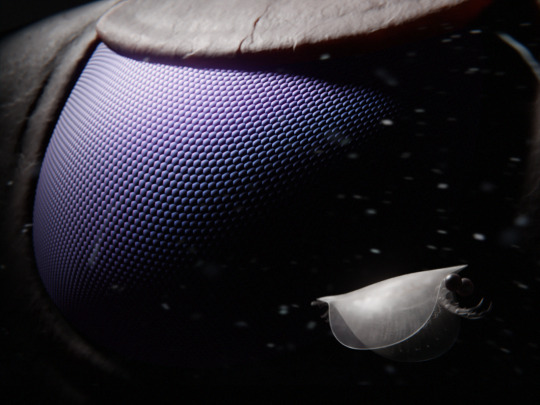
514 millions years ago in what will one day be known as the Emu Bay Shale (South Australia), a tiny Isoxys glaessneri encounters the hunter 'Anomalocaris' briggsi.
'Anomalocaris' briggsi was a large suspension-feeding radiodont related to the famous raptorial predator Anomalocaris canadensis. It is one of two radiodont species for which exceptionally detailed fossils of compound eyes are known. The eyes in this species are unsual for radiodonts in that they are not stalked, and protected by a small plate which was likely a modified version of the lateral carapace elements found in hurdiids. The eye morphology suggests that 'A.' briggsi was a mesopelagic species capable of inhabiting depths of several hundred meters, using its acute vision to detect planktonic prey (Paterson et al. 2020).
Isoxys was a cosmopolitan genus of stem-euarthropod in the Lower and Middle Cambrian, characterized by a bivalved shield covering its whole body, two large eyes, and a frontal pair of so-called 'great appendages' probably used for grasping food items. These appendages show similarity with both the frontal appendages of megacheirans and those of radiodonts like Anomalocaris, and its mix of derived and basal anatomical traits (such as biramous appendages but an unclerotized trunk) make it a crucial organism for understanding the early evolution of arthropods (Legg & Vannier 2013, Zhang et al. 2021).
I tried to recreate the feeling of this common yet lovely type of scene in sci-fi movies where a ship or station gets dwarfed by a gigantic object slowly emerging behind it from the shadows - the only difference is that the 'giant' eye here is only about 3 cm wide, though that was still huge for the time.
References and technical details about the reconstruction under the cut:
The soft parts of I. glaessneri are not known (except for the eyes). Trunk appendages are based on I. curvirostratus (Zhang et al. 2021). Great appendages are partially based on I. communis, which may be the adult form of I. glaessneri (Fu et al. 2012); unfortunately, the great appendages of I. communis are poorly preserved (García-Bellido et al. 2009), so frontal appendage morphology was complemented with the better-known I. acutangulus.
The Isoxys is depicted here with only 11 pairs of trunk limbs, instead of the usual 13+ (Zhang et al. 2021). Based on the assumption that the ancestral arthropod grew by post-hatching addition of segments (anamorphosis) (Liu et al. 2016), a reduced number of trunk limbs was judged appropriate given the small size of the specimen (ca. 6.5 mm) and the possible juvenile nature of I. 'glaessneri'.
References:
Fu, D., Zhang, X., Budd, G. E., Liu, W., & Pan, X. (2014). Ontogeny and dimorphism of Isoxys auritus (Arthropoda) from the Early Cambrian Chengjiang biota, South China. Gondwana Research, 25(3), 975–982. https://doi.org/10.1016/j.gr.2013.06.007
García-Bellido, D. C., Paterson, J. R., Edgecombe, G. D., Jago, J. B., Gehling, J. G., & Lee, M. S. Y. (2009). The bivalved arthropods Isoxys and Tuzoia with soft-part preservation from the Lower Cambrian Emu Bay Shale Lagerstätte (Kangaroo Island, Australia). Palaeontology, 52(6), 1221–1241. https://doi.org/10.1111/j.1475-4983.2009.00914.x
Legg, D. A., & Vannier, J. (2013). The affinities of the cosmopolitan arthropod Isoxys and its implications for the origin of arthropods. Lethaia, 46(4), 540–550. https://doi.org/10.1111/let.12032
Liu, Y., Melzer, R., Haug, J., Haug, C., Briggs, D., Hörnig, M., He, Y., & Hou, X. (2016). Three-dimensionally preserved minute larva of a great-appendage arthropod from the early Cambrian Chengjiang biota. Proceedings of the National Academy of Sciences, 113, 5542–5546. https://doi.org/10.1073/pnas.1522899113
Paterson, J. R., Edgecombe, G. D., & García-Bellido, D. C. (2020). Disparate compound eyes of Cambrian radiodonts reveal their developmental growth mode and diverse visual ecology. Science Advances, 6(49), eabc6721. https://doi.org/10.1126/sciadv.abc6721
Schoenemann, B., & Clarkson, E. N. k. (2011). Eyes and vision in the Chengjiang arthropod Isoxys indicating adaptation to habitat. Lethaia, 44(2), 223–230. https://doi.org/10.1111/j.1502-3931.2010.00239.x
Zhang, C., Liu, Y., Ortega-Hernández, J., Wolfe, J. M., Jin, C., Mai, H., Hou, X. G., Guo, J., & Zhai, D. (2021). Differentiated appendages in Isoxys illuminate origin of arthropodization. Research Square.
#anomalocaris#radiodont#isoxys#arthropod#eyes#compound eye#pelagic#emu bay shale#cambrian#paleozoic#paleoart#my art
485 notes
·
View notes
Text
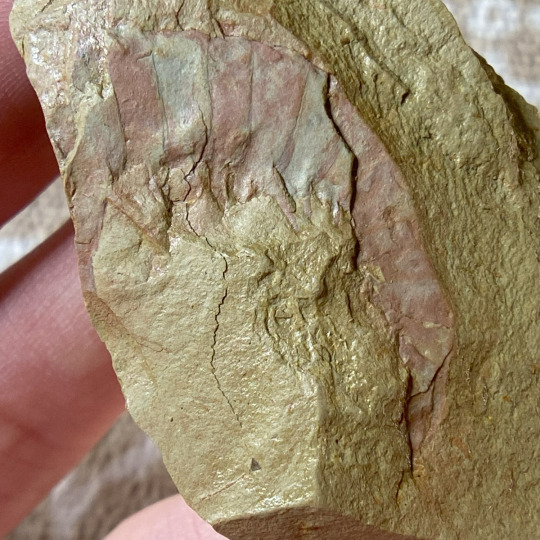
A fossilized appendage of an indeterminate radiodont from the Chengjiang Biota in Yunnan, China. These radiodonts or "anomalocarids" were all formerly assigned to Anomalocaris, but have since been moved into genera outside Anomalocarididae. Primarily, the two species, Anomalocaris saron and Anomalocaris kunmingensis were moved into Houcaris saron and Guanshancaris kunmingensis respectively.
#radiodont#radiodonta#fossils#paleontology#palaeontology#paleo#palaeo#houcaris#guanshancaris#anomalocaris#anomalocarididae#cambrian#paleozoic#prehistoric#science#paleoblr#ホウカリス#グアンシャンカリス#アノマロカリス#ラディオドンタ類#化石#古生物学
33 notes
·
View notes
Text

Paucipodia inermis, an unarmored 15cm long lobopopodian from the Chengjiang Biota of Yunnan China.
12 notes
·
View notes
Photo
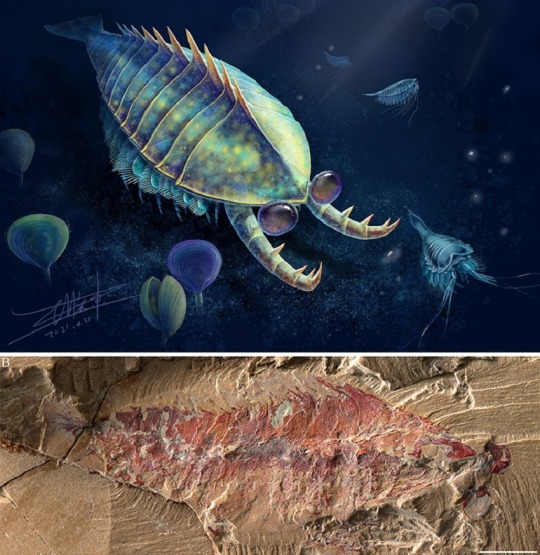
A new euarthropod with large frontal appendages from the early Cambrian Chengjiang biota
Robert J. O’Flynn, Mark Williams, Mengxiao Yu, Thomas H.P. Harvey, and Yu Liu
ABSTRACT
We describe Fengzhengia mamingae gen. et sp. nov., a new euarthropod from the lower Cambrian (Series 2, Stage 3) Chengjiang Lagerstätte, Southwest China.
Fengzhengia mamingae possesses prominent frontal appendages, stalked, circular eyes, a simple, sub-triangular head shield, and a trunk with 15 tergites, the anterior nine each bearing a single medial axial spine. Limited evidence suggests biramous trunk appendages with paddle-shaped exopods. At the posterior end is a sub-triangular region, possibly a pygidium, articulated with a tail fan.
The frontal appendage of F. mamingae resembles those of certain ‘great appendage’ arthropods and Isoxys. We test the affinities of F. mamingae by parsimony and Bayesian analyses and tentatively suggest that it is an early branch of Deuteropoda.
We suggest that F. mamingae may have been a nektobenthic scavenger or predator, and its dorsal exoskeleton is notable for exhibiting defensive spines.
Read the paper here:
https://palaeo-electronica.org/content/2022/3551-a-new-chengjiang-euarthropod
50 notes
·
View notes
Text

DINOVEMBER DAY 1: 520MYA, STAGE 3 OF THE CAMBRIAN; YUNNAN, CHINA
It is the Cambrian period, and the warm sunlit seas of Southern China are home to a vibrant sponge-reef brimming with life. The creatures of the Cambrian are strange to us in the Holocene, as this period of time is a time of great experimentation in bodyplans thanks to the evolution of a very special type of organ: eyes. Predators can now see their prey, and vice versa, so the pace of life has sped up considerably, and everyone has had to adapt. Many organisms now have hard shells, spiny defences, or increased mobility to protect themselves from these new sighted predators.
One such predator is this Lyrarapax, cruising through a small group of Haikouichthys. You might be more familiar with her Canadian cousin Anomalocaris. At around half a metre long, Lyrarapax is one of the top predators of the Chengjiang biota; her strange arm like protrusion are derived from the filter feeding appendages of her ancestors, and she uses them to grab prey such as trilobites and pass them to the crushing wheel-like mouth on the underside of her head.
Arthropods like her dominate the Cambrian seas, and along with cephalopod molluscs, will rule the Ordovician as well. Primitive chordates like Haikouichthys will remain in their shadow… for now.
#dinovember#Dinovember 2022#palaeontology#palaeoart#anthem posts#anthems art#Lyrarapax#anomalocaris#Haikouichthys#cambrian
24 notes
·
View notes
Text
Breaking Through the Clouds
Time to Read:
1 minute
A few years ago, Captain Jiang Ting of the anti-drug unit of the Public Security Bureau in G City died in the line of duty. Yet, when the Vice Captain of the criminal investigation Unit in J City, Yan Xie, investigates the mysterious death of a young man at a karaoke bar, he recognises the helpful civilian Lu Chengjiang as that very Jiang Ting.
Continue reading Breaking…

View On WordPress
#Adapted from a novel#Author: Huai Shang#Genre: Action#Genre: BL#Genre: Danmei#Genre: Drama#Genre: Mystery#Genre: Police Procedural#Genre: Psychological#Genre: Tragedy#Illustrator: Yin Hu Zhi Shang#Publisher: BiliBili Comics#Theme: LGBTQ#Title: Breaking Through the Clouds#Year: 2020
0 notes
Text

Truth be told, scientists aren't quite sure what's going on with this transitional arthropod's eyes! There are several hypotheses, which I show above. Turns out Eye Number was much more variable in the past than it is today - at least for these crunchy weirdos
Five Eyes (Maybe) My Guy has been interpreted in several ways - here we see three eyes on top, two below:

But in this interpretation, we have three eyes, with the lower eyes being interpreted as one giant eye:

As we get closer to Five Eyes My Guy to find out the answer, we suddenly get swept away by a current, straight towards -
THE PENISES?!?!?!
This is a continuation of these posts and is an ongoing choose your own adventure story! (1) (2) (3) (4) (5) (6) (7) (8) (9) (10)
#Maotianshan Shales#Chengjiang Fauna#Cambrian#Palaeoblr#Choose Your Own Adventure#Palaeoblr Choose Your Own Adventure
262 notes
·
View notes
Text
Jiangxi Chengjiang New Energy Co., Ltd.
Experts in Manufacturing and Exporting Power Lithium Battery, 18650&21700 Battery Packs.



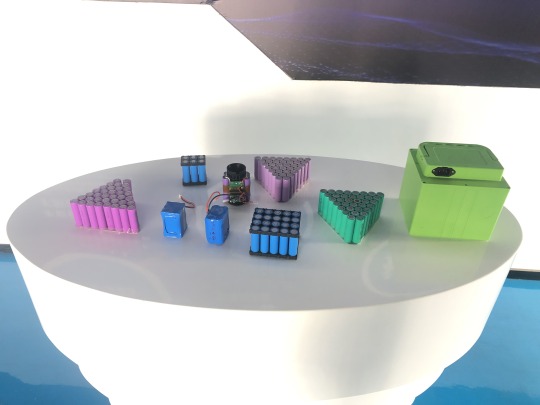

1 note
·
View note
Text

smth stylized Chengjiang fossil site logo
(Omnidens amplus)
1 note
·
View note